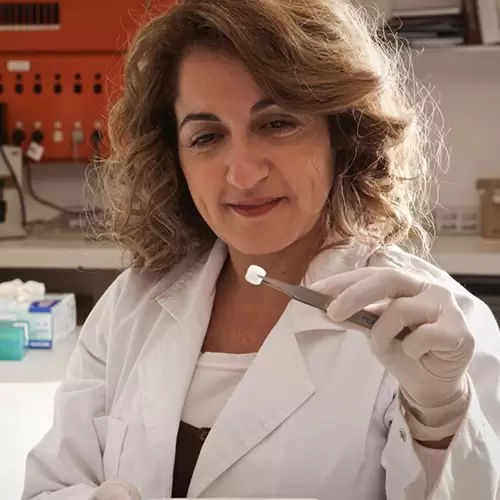Brought to you by
Professor Hala Zreiqat
Innovation:
3D-printed synthetic bone
Professor of Biomedical Engineering, University of Sydney; PhD (Biomedical), University of Sydney
Large bone defects arising from trauma, infection, or tumour resection present a major challenge in orthopaedic medicine, especially for bones that are loadbearing.
To solve this problem, University of Sydney Professor of Biomedical Engineering Hala Zreiqat developed and patented a class of synthetic bone substitutes that are simultaneously bioactive, strong and resorbable.
These 3D-printable synthetic biomaterials are not only capable of healing large bone defects, but can also withstand the stresses and strains of weight-bearing parts of the body like the spine.
“Therapeutic options for many orthopaedic injuries have improved considerably over the years, yet the repair of extensive bone damage has proved an intractable problem,” Zreiqat says.
“The overarching goal of our endeavour has been to use innovative approaches and technologies to produce clinically relevant synthetic scaffold materials for the treatment of large bone defects that cannot heal without intervention.”
Zreiqat and her team developed novel bioactive ceramics to be used in bone implants.
Current treatments using bone autografts have serious limitations.
In response to this challenge, Zreiqat and her team developed novel bioactive ceramics to be used in the bone implants, which is fabricated using scaffolds with high porosity (80 per cent) and interconnectivity (100 per cent) while maintaining strength and toughness.

Two of the developed materials, Gahnite and Baghdadite, are expected to transform the future of surgery for bone defects.
In the case of Gahnite, once the patient’s real bone has grown back, the implant vanishes, having been absorbed by the body.
Judges’ comments:
“The development of bioactive ceramics for bone implants which are absorbed once the person’s own bone grows back will be a game-changer in orthopaedic treatment, as demonstrated by the level of industry engagement. There is a clearly identified benefi t to the community that has required significant engineering work to bring to the usable stage.
“This innovation will improve people’s health and their lives, while reducing the overall resources required for these kinds of surgeries and the risks involved. A long-term project solving problems that haven’t been solved elsewhere.”